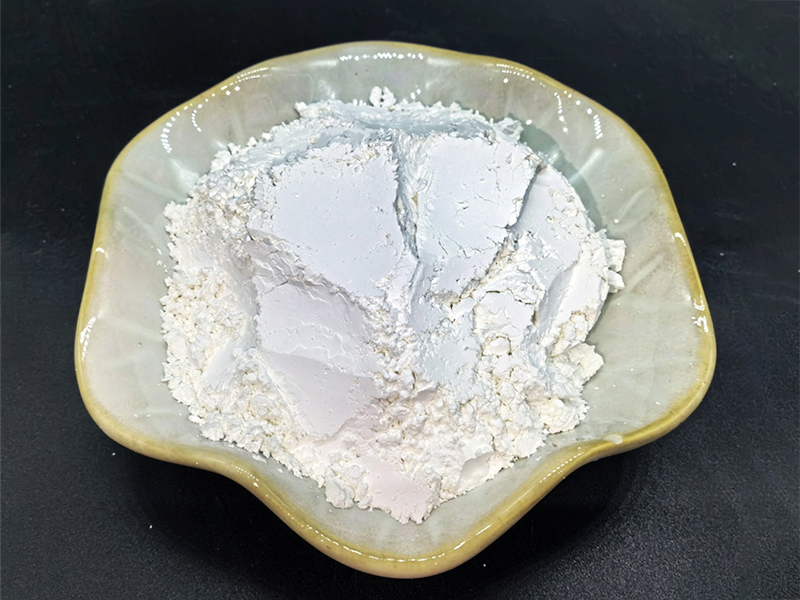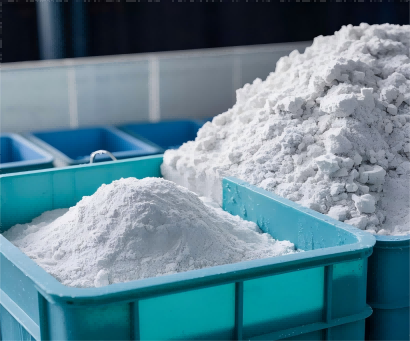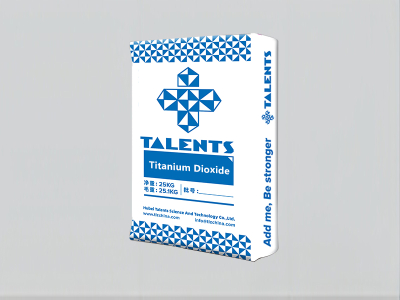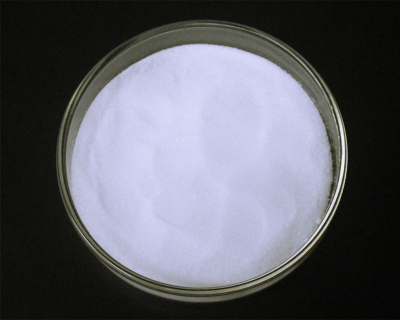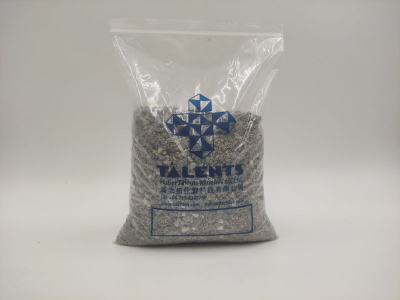precipitate of barium sulphate
The precipitate of barium sulphate is a white, fine - textured solid formed when barium ions react with sulphate ions in an aqueous solution, typically through a double - displacement reaction. This precipitate is highly insoluble in water and most common acids, which makes it useful in various applications. In analytical chemistry, it serves as a key compound for gravimetric analysis to determine the amount of sulphate or barium in a sample. In industries, it can be used as a filler in products like paints and plastics, enhancing their opacity and mechanical properties due to its high density and chemical stability.
Product Name:precipitate of barium sulphate
Product Abbreviation:precipitate of barium sulphate
Supply Capacity:1000MT/Per month
Delivery Time:Within 15 working days after payment
Product Weight:25kg/bag
Barium sulfate precipitate is a white solid that can be used in CarPaints Precipitated Barium Sulphate and Plastic Grade Precipitated Barium Sulphate. It reacts with acid radical ions and is insoluble in most acids. It is an important chemical product. It can be used to test the content of barium sulfate and is also used as a filler in products such as paints and plastics.
Index | TLZ-PBS302 |
BaSO₄ Content min% | 98% min |
Moisture max % | 0.15 |
Water Soluble max % | 0.15 |
lron Content | 5 ppm |
Whiteness % | 97 min |
Brightness (L Value ) | 98-99% |
Oil Absorption | 10-20 g/cm³ |
PH | 6.5-9.0 |
Particle Size D50 | 0.3 μm |
Residue (45 μm) | 0.02% max |
Conductivity | 150 μs/cm |
Our barium sulfate is used in construction, food, pharmaceutical, PVC, personal care and other industries as follows:
1.Pharmaceutical field:
As a contrast agent for X-ray and CT scanning, it can enhance the contrast effect of organs or blood vessels in the body due to its high density and high absorption, helping doctors to make accurate diagnosis.
Used in the treatment of gastrointestinal disorders, such as gastric ulcers and colitis, patients can drink a solution containing barium sulfate and observe the gastrointestinal tract through X-ray examination.
2.Industrial field:
Plastic and rubber: as filler to improve the hardness, abrasion resistance and aging resistance of the products, and at the same time reduce the cost.
Coatings and paints: as white pigment and filler, to increase the thickness, strength and durability of the paint film, and to improve the covering power and gloss of the coating.
Paper making: as filler, improve the whiteness and opacity of paper, improve the smoothness and uniformity of paper.
Ceramics and glass: as raw material to improve the physical properties of products, such as whiteness, density and heat resistance.
Oil and gas: as an aggravating agent for drilling mud to help stabilize well walls and prevent blowouts.
The precipitate of barium sulphate (BaSO₄) is a well-documented product of an inorganic double displacement reaction between soluble barium and sulfate salts. Known for its extreme insolubility, chemical stability, and inertness, barium sulfate is commonly used in analytical chemistry, industrial formulations, radiological imaging, and materials engineering.
This article presents a technical deep dive into the reaction mechanics, material properties, industrial uses, regulatory standards, and safe handling of barium sulfate precipitates, with examples and best practices in application.
What Is a Precipitate of Barium Sulphate?
The precipitate of barium sulphate forms when an aqueous solution of a barium salt (typically BaCl₂) is mixed with a sulfate salt (such as Na₂SO₄ or H₂SO₄). The resulting BaSO₄ is insoluble in water and precipitates as a fine white solid.
Balanced Chemical Reaction:
BaCl₂ (aq) + Na₂SO₄ (aq) → BaSO₄ (s) ↓ + 2NaCl (aq)
State of Precipitate: Solid (s), finely dispersed
Color: Bright white
Solubility in Water: 0.0002448 g/100 mL at 20°C
Ksp (Solubility Product Constant): 1.1 × 10⁻¹⁰ at 25°C
Reaction Mechanism and Engineering Principles
1. Double Displacement Reaction (Metathesis)
Occurs when the Ba²⁺ ion from barium salt combines with SO₄²⁻ from the sulfate to form insoluble BaSO₄.
Reaction is driven by the extremely low Ksp of barium sulphate.
2. Process Conditions
| Parameter | Typical Value/Range | Importance |
|---|---|---|
| pH Range | 4.5–9.0 | Precipitate remains stable |
| Temperature | 20–80°C | Higher temps increase nucleation rate |
| Mixing Rate | Moderate (500–1000 rpm) | Prevents agglomeration |
| Ionic Concentration | >0.01 mol/L | Ensures rapid and complete reaction |
Fine-grained, orthorhombic crystals
Particle size depends on reaction kinetics and stirring energy
Industrial and Laboratory Applications
| Application | Role of Barium Sulphate Precipitate | Industry |
|---|---|---|
| Gravimetric Analysis | Used to quantify sulfate ions by measuring BaSO₄ mass | Analytical Chemistry |
| Medical Imaging | As contrast agent in X-rays due to high atomic number | Healthcare/Radiology |
| White Pigment / Filler | Used in paints, plastics, and rubbers | Coatings & Polymers |
| Paper Coating | Enhances brightness and opacity | Paper Industry |
| Ceramics & Glass | Enhances refractive index and hardness | Advanced Materials |
Key Material Properties
| Property | Value | Engineering Impact |
|---|---|---|
| Molar Mass | 233.39 g/mol | Calculation for stoichiometric formulation |
| Density | ~4.5 g/cm³ | Increases bulk weight of composites |
| Thermal Stability | Stable up to ~1600°C | Suitable for high-temperature processes |
| Refractive Index | 1.64 | Bright white appearance in pigmenting |
| Toxicity | Non-toxic (if insoluble) | Safe in coated or bound forms (e.g., radiology) |
Safety, Regulatory Compliance, and Handling
1. Material Safety
Inert and non-toxic when ingested in medical-grade form
Avoid inhalation of powder (dust hazard; use PPE)
Insoluble and non-reactive in environmental conditions
2. Regulatory Standards
| Regulatory Body | Compliance Note |
|---|---|
| OSHA | PEL: 10 mg/m³ (total dust), 5 mg/m³ (respirable fraction) |
| FDA | Approved for oral use in diagnostic imaging |
| REACH | Fully registered; not classified as hazardous |
| ISO 3262-4 | Specification for barium sulfate as extender pigment |
| ASTM D2310 | Standard classification of fillers for plastics |
Example: Gravimetric Sulfate Analysis in Water Testing
In environmental labs, sulfate concentration is determined via gravimetric precipitation of BaSO₄:
Sample water is acidified and mixed with BaCl₂.
BaSO₄ precipitates, filtered, washed, dried at 800°C.
Weighing yields sulfate content via stoichiometry.
Calculation Example:
If 0.233 g of BaSO₄ is collected from a 100 mL water sample:
Moles of BaSO₄ = 0.233 / 233.39 = 0.001 mol
Moles of SO₄²⁻ = 0.001 mol → Sulfate = 96.06 mg/L
Frequently Asked Questions (FAQs)
❓ Why is barium sulfate insoluble in water?
Due to its very low solubility product constant (Ksp = 1.1 × 10⁻¹⁰), the ionic lattice is too stable to dissociate in aqueous media.
❓ Can barium sulfate be dangerous?
Not in its solid or precipitated form. However, soluble barium salts (like BaCl₂) are toxic, so unreacted barium must be fully precipitated before disposal.
❓ How do I ensure complete precipitation?
Use excess sulfate or barium and maintain a neutral to slightly basic pH.
Stir thoroughly and allow time for complete crystal growth.
❓ Is BaSO₄ precipitate used in medicine?
Yes, in a micronized or coated form, it is ingested for X-ray contrast imaging of the gastrointestinal tract.
Summary: Engineering Significance of BaSO₄ Precipitate
| Attribute | Importance in Science and Industry |
|---|---|
| High purity and whiteness | Ideal for pigments and analytical uses |
| Insolubility | Suitable for safe ingestion and precise analysis |
| Thermal and chemical stability | Compatible with high-stress environments |
| Regulatory acceptance | Widely approved for use in medical and food sectors |

